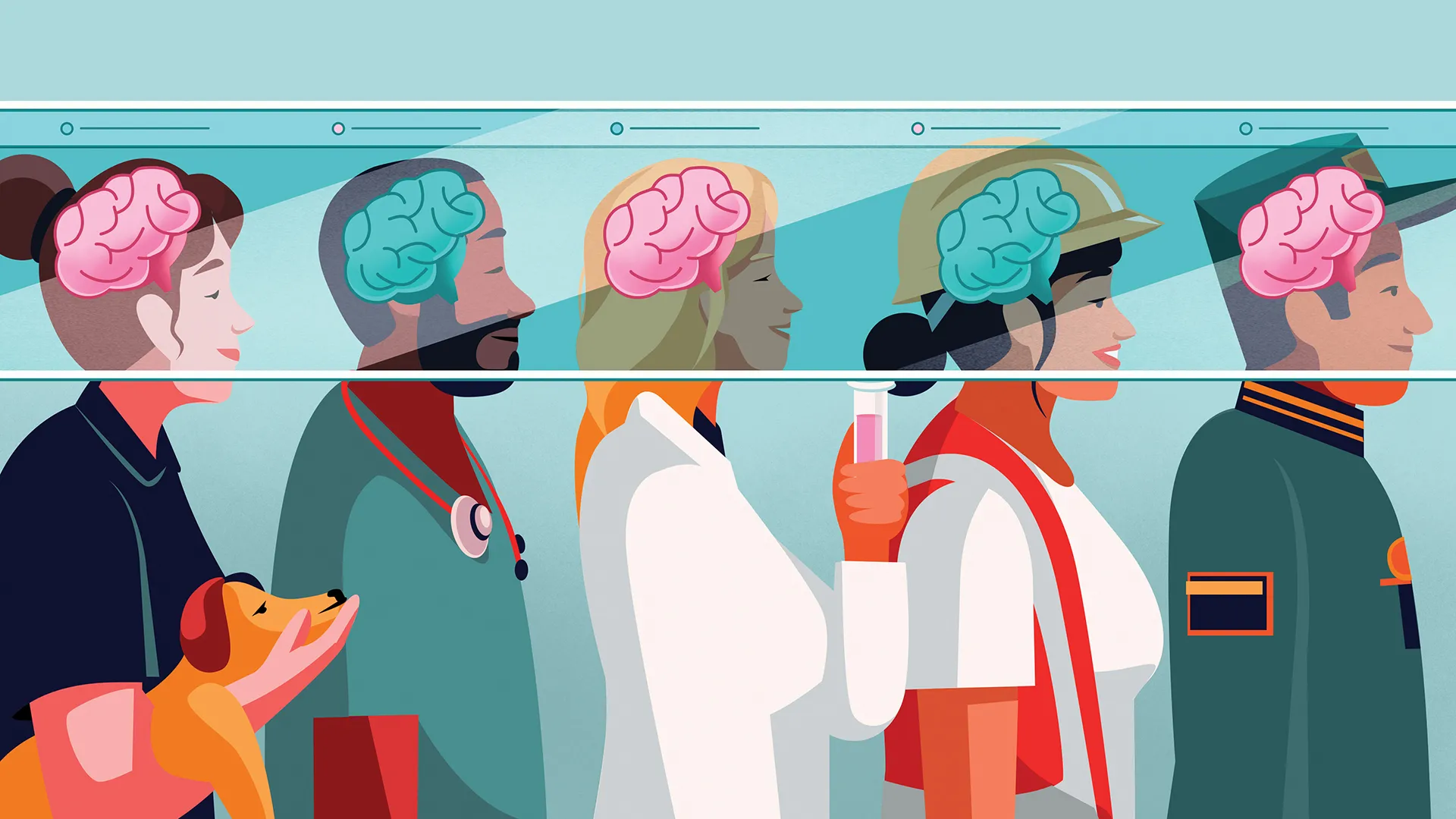Credit: Jack Hudson
Humanity has been hunting for sex-based differences in the brain since at least the time of the ancient Greeks, and it has largely been an exercise in futility. That’s partly because human brains do not come in two distinct forms, said Dr. Armin Raznahan, chief of the National Institute of Mental Health’s Section on Developmental Neurogenomics. “I’m not aware of any measure you can make of the human brain where the male and female distributions don’t overlap,” Raznahan told Live Science…….Continue reading….
By: Nicoletta Lanese
Source: Live Science
.
Critics:
The brain is not fully understood, and research is ongoing. Neuroscientists, along with researchers from allied disciplines, study how the human brain works. The boundaries between the specialties of neuroscience, neurology and other disciplines such as psychiatry have faded as they are all influenced by basic research in neuroscience.
Neuroscience research has expanded considerably. The “Decade of the Brain”, an initiative of the United States Government in the 1990s, is considered to have marked much of this increase in research, and was followed in 2013 by the BRAIN Initiative. The Human Connectome Project was a five-year study launched in 2009 to analyse the anatomical and functional connections of parts of the brain, and has provided much data.
An emerging phase in research may be that of simulating brain activity. Information about the structure and function of the human brain comes from a variety of experimental methods, including animals and humans. Information about brain trauma and stroke has provided information about the function of parts of the brain and the effects of brain damage.
Neuroimaging is used to visualise the brain and record brain activity. Electrophysiology is used to measure, record and monitor the electrical activity of the cortex. Measurements may be of local field potentials of cortical areas, or of the activity of a single neuron. An electroencephalogram can record the electrical activity of the cortex using electrodes placed non-invasively on the scalp.
Invasive measures include electrocorticography, which uses electrodes placed directly on the exposed surface of the brain. This method is used in cortical stimulation mapping, used in the study of the relationship between cortical areas and their systemic function. By using much smaller microelectrodes, single-unit recordings can be made from a single neuron that give a high spatial resolution and high temporal resolution. This has enabled the linking of brain activity to behaviour, and the creation of neuronal maps.
The development of cerebral organoids has opened ways for studying the growth of the brain, and of the cortex, and for understanding disease development, offering further implications for therapeutic applications. Bioinformatics is a field of study that includes the creation and advancement of databases, and computational and statistical techniques, that can be used in studies of the human brain, particularly in the areas of gene and protein expression.
Bioinformatics and studies in genomics, and functional genomics, generated the need for DNA annotation, a transcriptome technology, identifying genes, their locations and functions. GeneCards is a major database.
As of 2017, just under 20,000 protein-coding genes are seen to be expressed in the human, and some 400 of these genes are brain-specific. The data that has been provided on gene expression in the brain has fuelled further research into a number of disorders. The long term use of alcohol for example, has shown altered gene expression in the brain, and cell-type specific changes that may relate to alcohol use disorder.
These changes have been noted in the synaptic transcriptome in the prefrontal cortex, and are seen as a factor causing the drive to alcohol dependence, and also to other substance abuses. Other related studies have also shown evidence of synaptic alterations and their loss, in the ageing brain. Changes in gene expression alter the levels of proteins in various neural pathways and this has been shown to be evident in synaptic contact dysfunction or loss.
This dysfunction has been seen to affect many structures of the brain and has a marked effect on inhibitory neurons resulting in a decreased level of neurotransmission, and subsequent cognitive decline and disease. The human brain has many properties that are common to all vertebrate brains. Many of its features are common to all mammalian brains, most notably a six-layered cerebral cortex and a set of associated structures, including the hippocampus and amygdala.
The cortex is proportionally larger in humans than in many other mammals. Humans have more association cortex, sensory and motor parts than smaller mammals such as the rat and the cat. As a primate brain, the human brain has a much larger cerebral cortex, in proportion to body size, than most mammals, and a highly developed visual system. As a hominid brain, the human brain is substantially enlarged even in comparison to the brain of a typical monkey.
The sequence of human evolution from Australopithecus (four million years ago) to Homo sapiens (modern humans) was marked by a steady increase in brain size. As brain size increased, this altered the size and shape of the skull, from about 600 cm3 in Homo habilis to an average of about 1520 cm3 in Homo neanderthalensis. Differences in DNA, gene expression, and gene–environment interactions help explain the differences between the function of the human brain and other primates.
“Encephalo- Etymology”. Online Etymology Dictionary. Archived
Neuroimaging Genetics: Principles and Practices.
Evolving knowledge of sex differences in brain structure, function, and chemistry”. Gray’s Anatomy 2008
Structural characterization of SLYM-a 4th meningeal membrane”.
A Surgeon’s-Eye View of the Brain”.
White Matter Plasticity in the Adult Brain”.
Discovering Biological Psychology. Cengage Learning.
Fundamentals of Human Neuropsychology.
Basal forebrain activation enhances cortical coding of natural scenes”.
.
.
Labels:Neuropsychology,cortical,Plasticity,brainstructure,Genetics,futility,brains,neurology,psychology






Leave a Reply